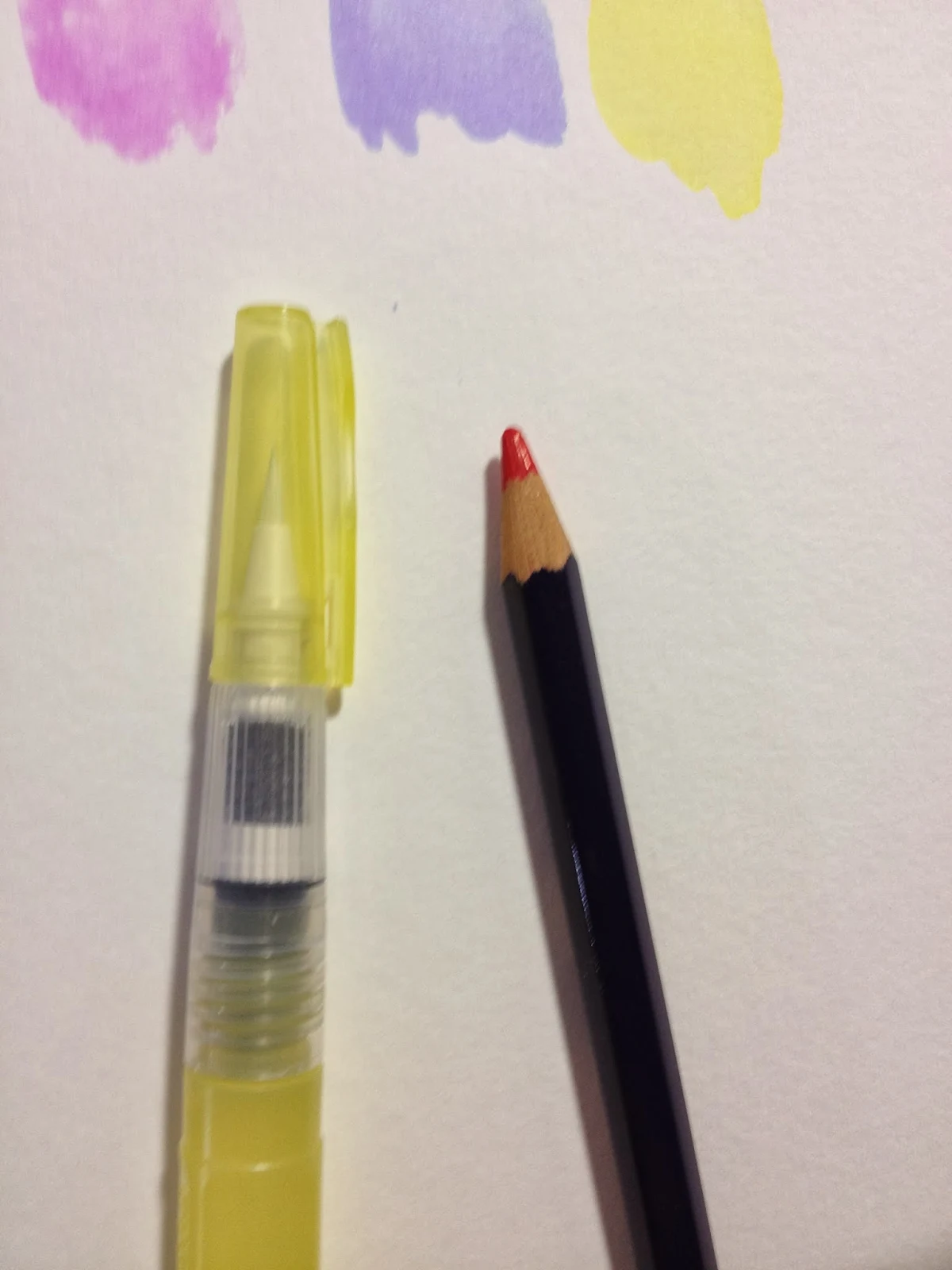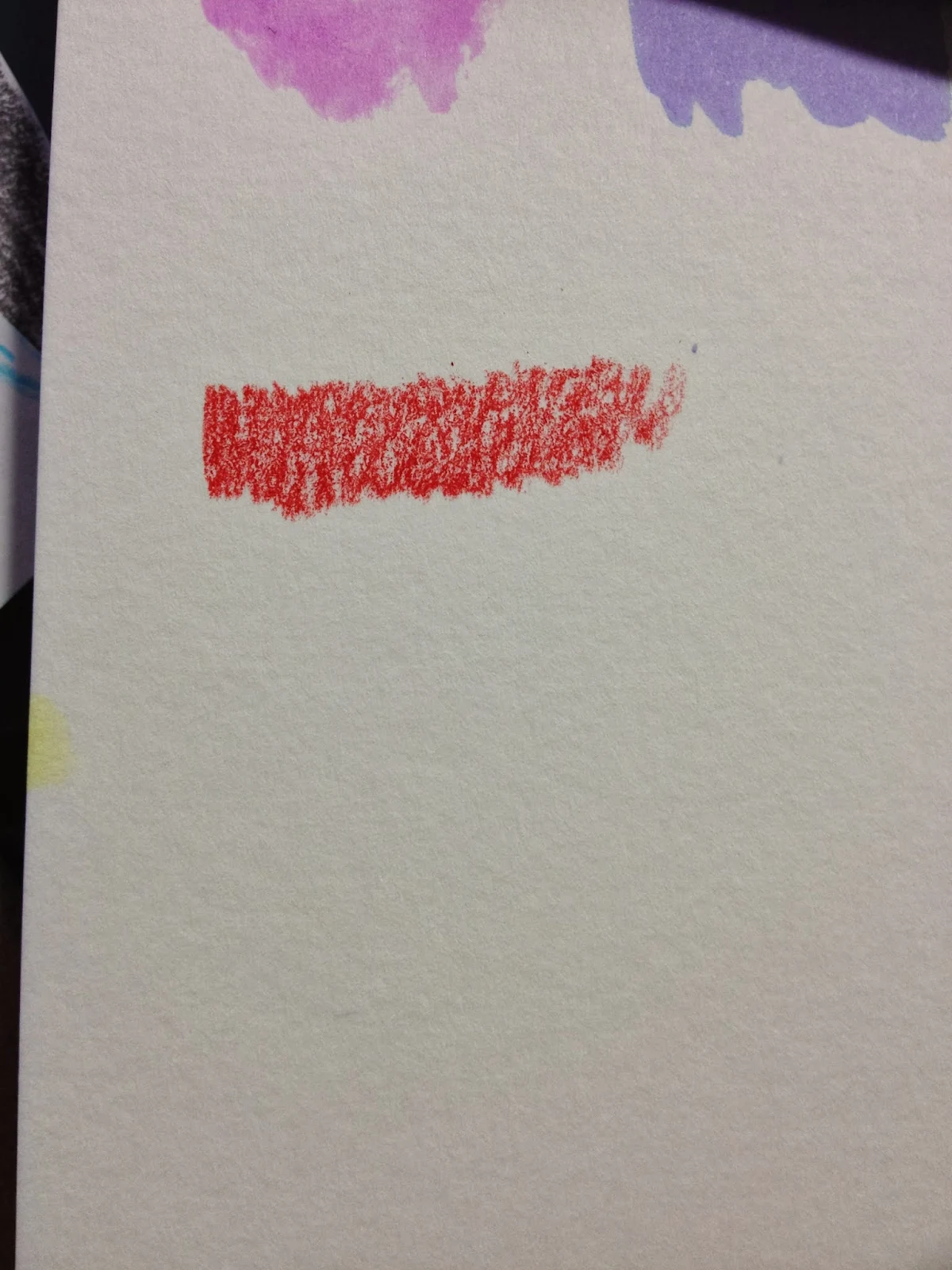January Deboxing: Art Snacks, Box 9
If you enjoyed this review, please consider donating!
Donations go towards the purchase of additional art supplies, which may
include more markers for testing. If you found this review useful,
please consider sharing it on your social networks.
Art Snacks has some social media outreach including reblogging deboxings and the Art Snacks Challenge, which challenges customers to create and share art made with each month's Snack. I do not participate in either aspect, but I encourage those interested to give it a shot.
This is by no means a sponsored post, I purchase these Art Snacks myself. Your donations go to help fund reviews such as these.
I've purchased/acquired several waterbrushes of various sizes, tips, and brands in the past, but I've never really taken to them. I tend to prefer real brushes when I do watercolors, and I don't really do a lot of watercolor sketches on the road. Waterbrushes seem convenient, as your water source is always with you, but the tip tends to get dirty, the colors are watered down when applied, and there's often pick-up of pigment from prior layer applications. Waterbrushes are probably good for single color, single application, and I've heard that some people use waterbrushes with water-based ink pens to give the appearance of a wash. This is something I'd be interested in investigating myself, as it seems like a really neat technique. There are many waterbrushes available at a variety of prices, so selecting the right one for you may seem a bit daunting.
Some waterbrushes disassemble to be more compact, and include a little stopper that must be removed before using the brush. This brush is not one of those brushes. This brush can be filled with water or ink (I have friends who've made their own brushpens this way), and in the past, I've experimented by filling a waterbrush with watered down white ink, hoping to make a good, portable white ink brush pen. It clogged, so I do not recommend this. I suppose a waterbrush could also be filled with Copic's Blender solution or alcohol and used to achieve more painterly affects, but my attempts at doing so have resulted in failure.
I've had some difficulty in the past getting a detailer tipped waterbrush, as they tend to sell out quickly. This brush has a nice size tip and doesn't put out too much water, so application can be controlled better than larger tips in other waterbrushes. As you can see, I experimented with a watercolor pencil (a Derwent Inktense that came in a past Art Snack). Personally, I think watercolor pencils are the best use for a waterbrush, as both are portable and don't necessarily require repeated applications. With the watercolor pencils, you can achieve a saturation of color that may not be possible with pan or tube watercolors.
Pitt Pen
Pitt pens are pretty popular among comic artists, and are available in a variety of sizes and colors. There are sized technical pen tips (S, M, B) as well as two sizes of brush tips- the regular brush, and the big brush.
I've used Pitt pens to apply tone to sketches, for handlettering, and on the very rare occasion, for inking. I vastly prefer fude pens and Multiliners to Pitt Pens, as there's a tendency for the nib or brush to wear out fast. Fortunately, you can flip the nib in order to get more use out of it. Pitt Pens are pretty commonly available, and are relatively inexpensive.
Irojiten Color Pencil
M. Graham & Co Artist's Watercolors
I have a confession to make. Although I've been interested in both these products for a long time, I haven't tested either of them yet. I am not really a fan of reviewing products based on just one example from the line. M. Graham watercolors are made using honey, which may sound unusual, but most watercolors use a sugar/sucralose as a stabilizer. Honey isn't a bad pick, as it's antibacterial and is a preservative. According to DickBlick,
I've seen Tombow's Irojiten color pencils for sale on JetPens, and have longed to splurge and buy a small set for testing, but I don't think it's fair to compare them to Caran d'Ache's Pablo color pencils. According to DickBlick,
The pencil collections on Jetpens look simply beautiful, but I've learned from the Pantone Universe markers that appealing design does not always make for a useful product.
The Breakdown:
I have to admit I let out a little shriek of excitement when I saw that this month's Art Snacks was geared more toward the sort of artist I am. Especially when I saw the tube of M. Graham watercolor AND an Irojiten color pencil, two products I've been dying to try. I'm going to have to order a few more Irojiten color pencils before I can do a review (probably comparing them to the two other professional brands I have experience with, Prismacolor Pencils and Caran d'Ache Pablo pencil colors), but now that I know Dick Blick sells them openstock, I can make that dream a reality without breaking my budget. As much as I admired the beautiful sets on JetPens, I couldn't justify buying an entire set as I did with the Akashiya Sai watercolor brush pens.
The past few Art Snacks have had totals over $20, so I don't mind that this total is under. Personally, I feel that as long as the materials equal about $15, I'm getting a good deal. I really enjoyed this Art Snack, and I enjoy the subscription.
Introduction to Art Snacks
For those yet not familiar with Art Snacks, they're a subscription art supply service much like Umba Box. Participants don't know what will be included in their monthly box, and get no selection. As of yet, Art Box has not offered participants an opportunity to specify what sort of supplies they would prefer, nor what sort of art they focus on creating, so the service is more of one size fits all novelty. Generally supplies suit draftspeople, illustrators, general artists, and comic artists will, but occasionally more specific supplies are included in the box. Each box costs about $20, and lately the total value has been greater than that. This estimate based upon my own art supply purchasing and sourcing. Included in every Art Snacks box is a piece of candy (a 'snack'), a vinyl sticker, and a 'menu' that explains the included art supplies. Factoring in shipping, I would say that if you enjoy random art supplies for novelty, or are looking to expand your collection in a general way, Art Snacks is a fun service.Art Snacks has some social media outreach including reblogging deboxings and the Art Snacks Challenge, which challenges customers to create and share art made with each month's Snack. I do not participate in either aspect, but I encourage those interested to give it a shot.
This is by no means a sponsored post, I purchase these Art Snacks myself. Your donations go to help fund reviews such as these.
Past Art Snacks Deboxings
The Menu for January
- Faber-Castell India Ink Pitt Artist Pen
- Irojiten Color Pencils by Tombow
- Zig Water Color BrusH20 Pens
- M. Graham & Co. Artist's Watercolor
The Goods:
Supply Test:
BrusH20 Watercolor Pen:I've purchased/acquired several waterbrushes of various sizes, tips, and brands in the past, but I've never really taken to them. I tend to prefer real brushes when I do watercolors, and I don't really do a lot of watercolor sketches on the road. Waterbrushes seem convenient, as your water source is always with you, but the tip tends to get dirty, the colors are watered down when applied, and there's often pick-up of pigment from prior layer applications. Waterbrushes are probably good for single color, single application, and I've heard that some people use waterbrushes with water-based ink pens to give the appearance of a wash. This is something I'd be interested in investigating myself, as it seems like a really neat technique. There are many waterbrushes available at a variety of prices, so selecting the right one for you may seem a bit daunting.
Some waterbrushes disassemble to be more compact, and include a little stopper that must be removed before using the brush. This brush is not one of those brushes. This brush can be filled with water or ink (I have friends who've made their own brushpens this way), and in the past, I've experimented by filling a waterbrush with watered down white ink, hoping to make a good, portable white ink brush pen. It clogged, so I do not recommend this. I suppose a waterbrush could also be filled with Copic's Blender solution or alcohol and used to achieve more painterly affects, but my attempts at doing so have resulted in failure.
I've had some difficulty in the past getting a detailer tipped waterbrush, as they tend to sell out quickly. This brush has a nice size tip and doesn't put out too much water, so application can be controlled better than larger tips in other waterbrushes. As you can see, I experimented with a watercolor pencil (a Derwent Inktense that came in a past Art Snack). Personally, I think watercolor pencils are the best use for a waterbrush, as both are portable and don't necessarily require repeated applications. With the watercolor pencils, you can achieve a saturation of color that may not be possible with pan or tube watercolors.
Pitt Pen
Pitt pens are pretty popular among comic artists, and are available in a variety of sizes and colors. There are sized technical pen tips (S, M, B) as well as two sizes of brush tips- the regular brush, and the big brush.
| Source |
Irojiten Color Pencil
M. Graham & Co Artist's Watercolors
I have a confession to make. Although I've been interested in both these products for a long time, I haven't tested either of them yet. I am not really a fan of reviewing products based on just one example from the line. M. Graham watercolors are made using honey, which may sound unusual, but most watercolors use a sugar/sucralose as a stabilizer. Honey isn't a bad pick, as it's antibacterial and is a preservative. According to DickBlick,
Colors made with honey do not dry up in the tube or on the palette, and they always dilute easily, often after months or years of disuse. Honey has been used extensively throughout the history of art as an ingredient in waterbased colors.
The editions have an outstanding look and feel and give the impression of being a high-end “color encyclopedia.” The exquisite enamel finish of the pencils, the packaging, and the high quality of the product have made Irojiten an all-time classic in Japan. These sets are perfect for the artist as well as the collector.
The Breakdown:
- Faber-Castell India Ink Pitt Artist Pen- $1.93 each (DickBlick)
- Irojiten Color Pencils by Tombow- $2.39 (openstock) (DickBlick)
- Zig Water Color BrusH20 Pens- $4.81 (Amazon) (although Jetpen's Kuretake 'Small' may be closer to the actual product, as Zig is a subsidiary of Kuretake- $5.00)
- M. Graham & Co. Artist's Watercolor- $7.59 (burnt umber, 15mL, prices will vary with color as some pigments cost more than others) (DickBlick)
The Verdict
The past few Art Snacks have had totals over $20, so I don't mind that this total is under. Personally, I feel that as long as the materials equal about $15, I'm getting a good deal. I really enjoyed this Art Snack, and I enjoy the subscription.






















Comments
Post a Comment